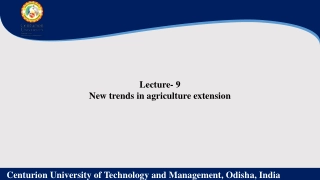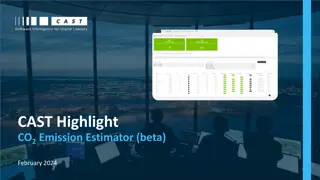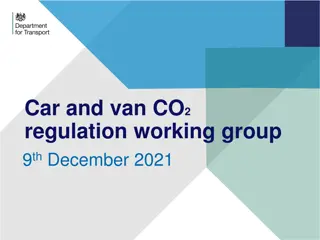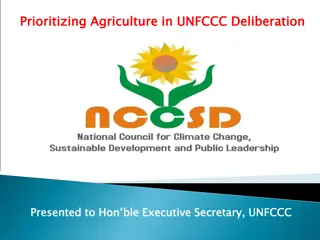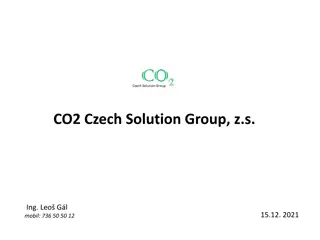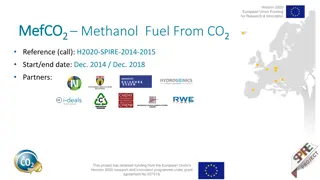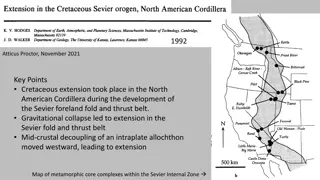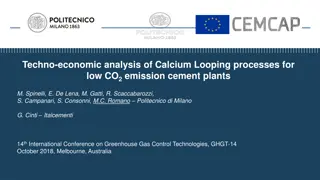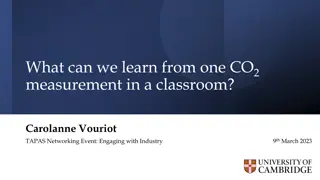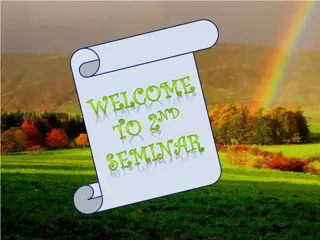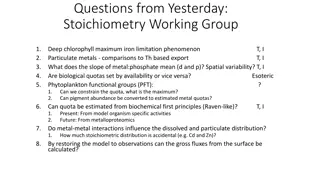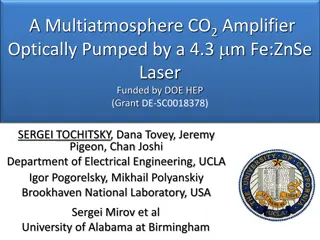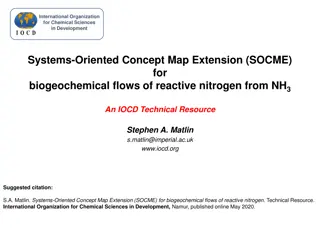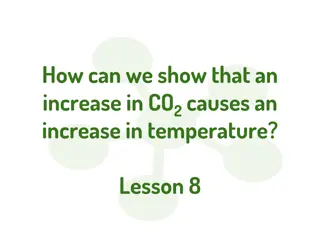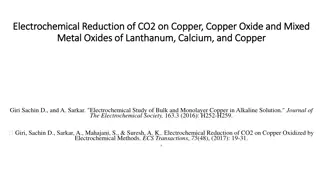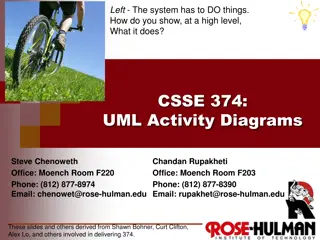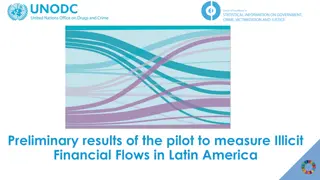Systems-Oriented Concept Map Extension for Biogeochemical Flows of CO2
The Systems-Oriented Concept Map Extension (SOCME) explores the biogeochemical flows of CO2, detailing interactions within the ocean and land subsystems, including factors such as uptake by different biomes, anthropogenic CO2 generation, deforestation effects, and energy production contributions. It emphasizes the importance of sustainable practices and mitigation strategies like carbon capture and storage for addressing the increasing CO2 concentrations and transitioning to alternative energy sources.
Download Presentation

Please find below an Image/Link to download the presentation.
The content on the website is provided AS IS for your information and personal use only. It may not be sold, licensed, or shared on other websites without obtaining consent from the author. Download presentation by click this link. If you encounter any issues during the download, it is possible that the publisher has removed the file from their server.
E N D
Presentation Transcript
International Organization for Chemical Sciences in Development Systems-Oriented Concept Map Extension (SOCME) for biogeochemical flows of CO2 An IOCD Technical Resource Stephen A. Matlin s.matlin@imperial.ac.uk www.iocd.org Suggested citation: S.A. Matlin. Systems-Oriented Concept Map Extension (SOCME) for biogeochemical flows of CO2. Technical Resource. International Organization for Chemical Sciences in Development, Namur, published online May 2020.
OCEAN INTERACTION SUBSYSTEM Uptake by ocean biome Uptake by deep ocean may ANTHROPOGENIC CO2 GENERATION SUBSYSTEM make transition to Deforestation by burning creating agricultural land reacts with water H2CO3 formation Production of CO2 gas exchange with water concrete production Uptake by shallow ocean Heating calcium carbonate slowly adds to CO2 in atmosphere CORE SUBSYSTEM contributes to energy production Burning fossil fuels Coral bleaching Concentration increase to over 400 ppm
LAND INTERACTION SUBSYSTEM OCEAN INTERACTION SUBSYSTEM reacts via consumption & metabolism Uptake by plant biome gas exchange with plants with plants Uptake by ocean biome Uptake by animal biome gas Uptake by deep ocean exchange may ANTHROPOGENIC CO2 GENERATION SUBSYSTEM respiration make transition to Deforestation by burning creating agricultural land reacts with water H2CO3 formation Production of CO2 gas exchange with water concrete production Uptake by shallow ocean Heating calcium carbonate slowly adds to CO2 in atmosphere CORE SUBSYSTEM contributes to energy production Burning fossil fuels Coral bleaching Concentration increase to over 400 ppm
LAND INTERACTION SUBSYSTEM OCEAN INTERACTION SUBSYSTEM reacts via consumption & metabolism Uptake by plant biome gas exchange with plants with plants Uptake by ocean biome Uptake by animal biome gas Uptake by deep ocean exchange may ANTHROPOGENIC CO2 GENERATION SUBSYSTEM respiration make transition to Deforestation by burning creating agricultural land reacts with water H2CO3 formation Production of CO2 gas exchange with water concrete production Uptake by shallow ocean Heating calcium carbonate slowly adds to CO2 in atmosphere CORE SUBSYSTEM contributes to energy production Burning fossil fuels reduce via Coral bleaching Concentration increase to over 400 ppm is part of long-term strategy fpr Alternative energy may directly reduce Sustainable energy supply Carbon capture & storage HUMAN MITIGATION SUBSYSTEM
LAND INTERACTION SUBSYSTEM OCEAN INTERACTION SUBSYSTEM reacts via consumption & metabolism Uptake by plant biome gas exchange with plants with plants Uptake by ocean biome Uptake by animal biome gas Uptake by deep ocean exchange may ANTHROPOGENIC CO2 GENERATION SUBSYSTEM respiration make transition to Deforestation by burning creating agricultural land reacts with water H2CO3 formation Production of CO2 gas exchange with water concrete production Uptake by shallow ocean Heating calcium carbonate slowly adds to CO2 in atmosphere CORE SUBSYSTEM contributes to energy production Burning fossil fuels reduce via Coral bleaching Concentration increase to over 400 ppm is part of long-term strategy fpr Alternative energy may directly reduce strategies for Feedstock Sustainable energy supply strategies for Carbon capture & storage Synthesis Sequestration HUMAN MITIGATION SUBSYSTEM INDUSTRIAL USE OF CO2 SUBSYSTEM
LAND INTERACTION SUBSYSTEM OCEAN INTERACTION SUBSYSTEM reacts via consumption & metabolism Uptake by plant biome gas exchange with plants with plants Uptake by ocean biome Uptake by animal biome gas Uptake by deep ocean exchange may ANTHROPOGENIC CO2 GENERATION SUBSYSTEM respiration make transition to Deforestation by burning creating agricultural land reacts with water H2CO3 formation Production of CO2 gas exchange with water concrete production Uptake by shallow ocean Heating calcium carbonate slowly adds to CO2 in atmosphere CORE SUBSYSTEM contributes to energy production Burning fossil fuels reduce via Coral bleaching Concentration increase to over 400 ppm permafrost melting is part of long-term strategy fpr is input to Alternative energy Anthropogenic globalwarming may directly reduce is core science behind strategies for Feedstock explain Sustainable energy supply included in strategies for Physics of molecules and radiation Carbon capture & storage Synthesis Climate modelling Climate modelling studies studies Sequestration HUMAN MITIGATION SUBSYSTEM INDUSTRIAL USE OF CO2 SUBSYSTEM CLIMATE CHANGE SUBSYSTEM


